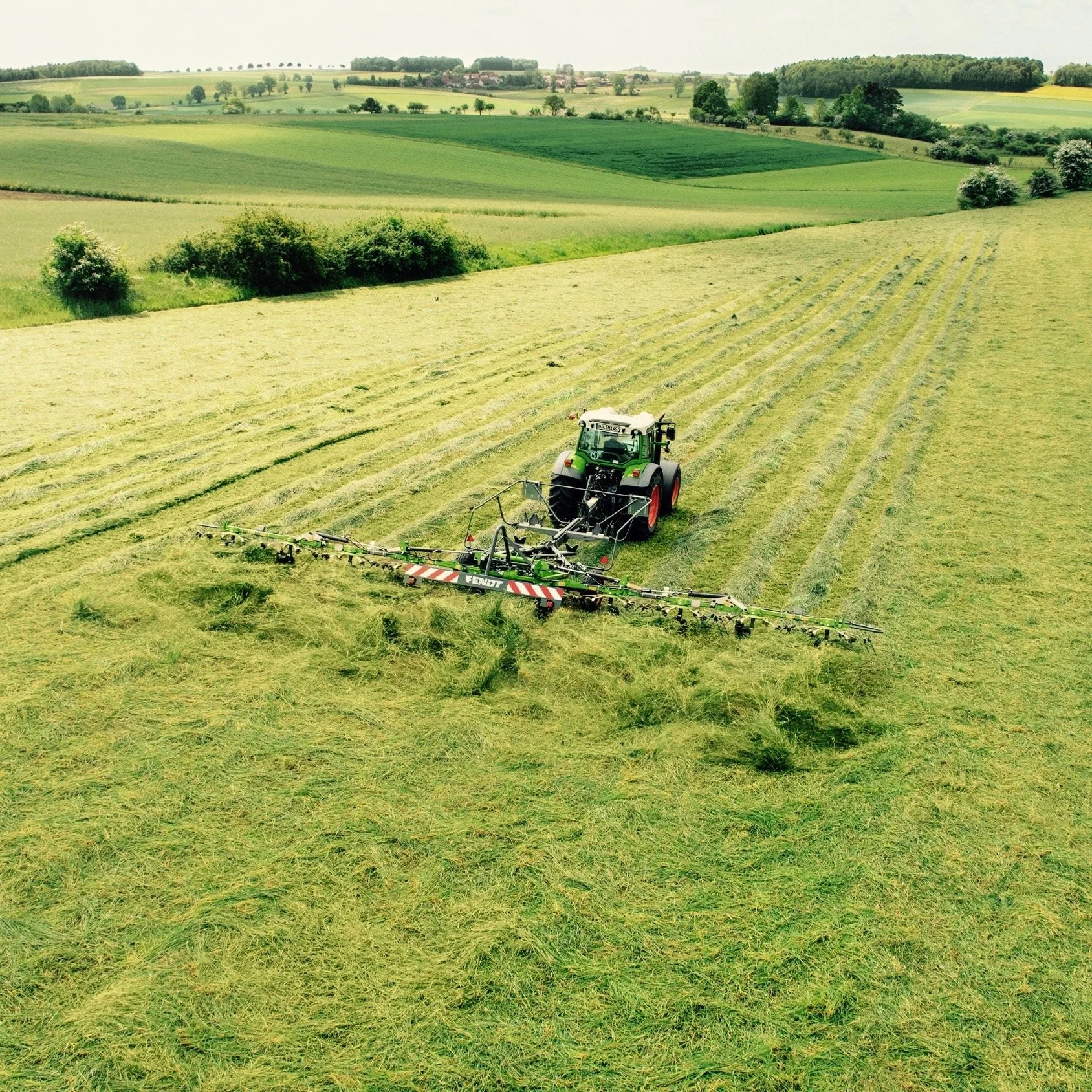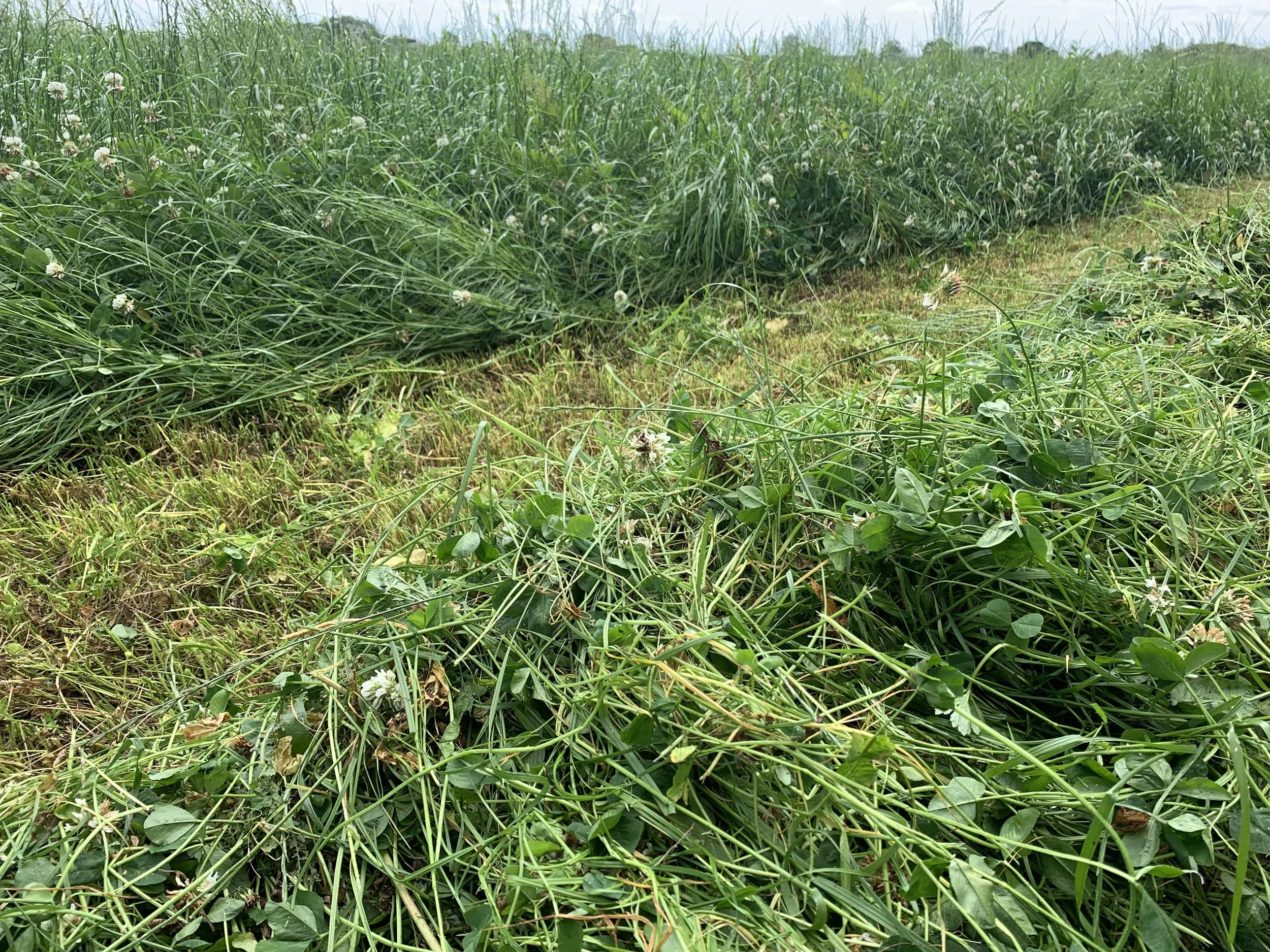Can multi-species herbal leys make good silage?
Multi-species or diverse grassland is bang on trend this season, it’s the new must have for trendy forage producers. The advocates will point out all the benefits of herbal leys or diverse grassland but how suitable is it to making good silage, and what special measures should you take to make good multi-species silage?
Can you make good silage from multi-species grassland?
First the good news, diverse grassland can be a very good silage if you pay attention to the details. Obviously it all depends on what is in the mix, a diversity that’s mostly thistles, nettles and brambles probably won’t have you ordering a new bulk tank, but the popular commercial seed mixes make strong claims. In trials of diverse grassland, samples have been shown to produce over 25% more protein and massively increased levels of minerals and trace elements when compared to single rye grass forage. Only your nutritionalist will know exactly how important this is to you, indeed some report that many rations already seem to contain too much protein so this might not be that helpful. What might be more important is the effect multi-species leys can have on your soils, the environment and your bank balance.
Multi species herbal lay mix by Germinal
Silage that’s good for your soils
Diversity is a good thing and when it comes to the health of our soils, it’s a vital thing. Multi-species leys include plants that root at different levels within the soil strata and this is beneficial in all sorts of ways. Deep tap roots help to aerate the soil and improve drainage whilst improving the distribution of worms and organic matter throughout the profile. The biggest benefit from increased diversity might be from reduced inputs that the sward requires. Increasing nitrogen fixing legumes, like clovers, can massively reduce the requirements for artificial “bag muck”. This is probably the area that is most likely to impact your bank balance because whilst the system certainly reduces costs, it also reduces production.
Counting the costs of silage diversity
I’m not going to attempt to quantify the costs and savings of switching to a multi-species grassland system because; firstly, I’m not qualified to do that and secondly, there are just too many variables. What I would suggest is that this sort of agricultural practice that our governments seem to want to promote. I wouldn’t be surprised if subsides are targeted at diverse species grasslands in the near future. At the time of writing there doesn’t seem to be an incentive but these are times of change so keep an eye on this option even if the maths don’t work out for you today.
Making special mix herbal silage
Before we get too bogged down in detail, remember the bit at the beginning, you can make good silage out of this stuff! What you need to be careful of, are the potential losses in both the field and within the clamp. Now once again it all depends on what is actually in the sward, but chances are there will be quite a bit of nitrogen fixing legume in the mix. As we all know most legumes and clovers are very delicate and there is a very high risk of loosing a lot of nutritional value from leaf shatter in the field. This is perhaps the most critical bit of making multi-species grassland silage; the forage needs to be wilted down to around 30% dry matter but the handling has be very gentle.
Krone CR Conditioners are designed for delicate forage
Normally I would recommend aggressive crop conditioning to speed wilting and halt respiration as soon as possible. However with higher legume content, you need to be much more careful, ideally use a rubber roller conditioner such as Krone’s EasyCut CR or similar. This will get the drying going more quickly whilst preserving as much leaf on the crop as possible.
You might be tempted to use a plain mower and ted the crop to achieve the required dry matter. The problem here is the action of the tedder on the drying crop as this is a process that can lead to some really high leaf losses for be extra careful.
Tedding grass silage with a Fendt Lotus
How long should herbal ley silage be wilted?
If you don’t know the answer to this question, I can’t help because neither do I, but with experience you will (and I still won’t). That’s because the exact mixture of species your pasture produces will be different from almost any other farm. No matter what seed mix you choose, there are so many different plant and species that will each thrive in different conditions. The same seed mix sown on your farm will yield a different sward to those drilled elsewhere in the country. That’s not a criticism, its more a fundamental characteristic of the philosophy; a sward that’s ideal for your conditions.
This means the crop will wilt at a different rate to a single species cut and this drying rate will change significantly depending on the maturity of the different plant types. So you need to get a feel for how your crops react to weather and cutting dates. Try drying samples taken at different times in a microwave oven to try and get an idea of how fast your crop wilts. And because it’s such a variable forage, you should take two or three sample for every single sample you would have normally taken for a simple rye grass forage to make sure you have all the plant types.
Do you chop multi-species differently to rye grass?
Chop length always depends on the crop dry matter, always…. until today! Well that’s not entirely true but the risk is producing a porous silage face once the clamp is opened is greater with a diverse sward. If your forage contains any fibrous stemmed material then there is a risk that this won’t compact as well as the “softer” forage material. If in doubt, chop it shorter to make sure it compacts well.
Does silage inoculant work on multi-species silage?
It should do yes. In fact it’s probably particularly wise to use to inoculant on diverse grassland forage to ensure the fastest ensiling possible. There aren’t any particular problems with diverse swards producing good fermentations unless the sugar levels are extremely low. There are some people who will advice you to use enzymes to break cellulose into carbohydrates for the bacteria to turn into acids in low sugar crops. Some might recommend this, but I wouldn’t. In this type of silage you are already short of energy and enzymes just free up some that was locked up in cellulose. I would rather add some extra sugars such as molasses to give the bacteria something to work on. In addition the overall balance of the silage nutrition is improved rather than further degraded.
Diverse, herbal ley or multi-species grasslands might suit you or they might not. If you do decide to try them, there is no reason to suspect the forage won’t make good silage. Just take care with wilting and make sure to remember every day is a school day and with new techniques come new opportunities to learn.
If you want to know more about making silage from diverse multi-species grassland or would like to discuss any other aspects covered in this series, contact me at jeremy@silageconsultant.co.uk



